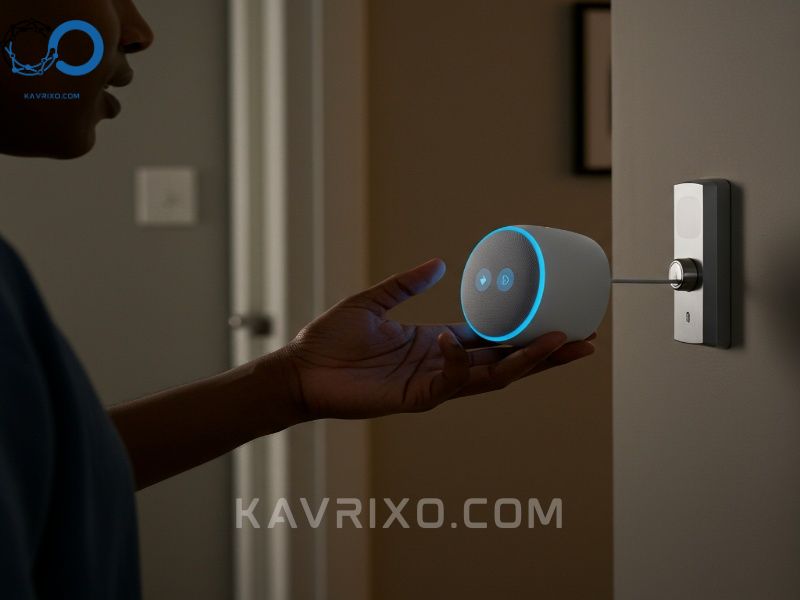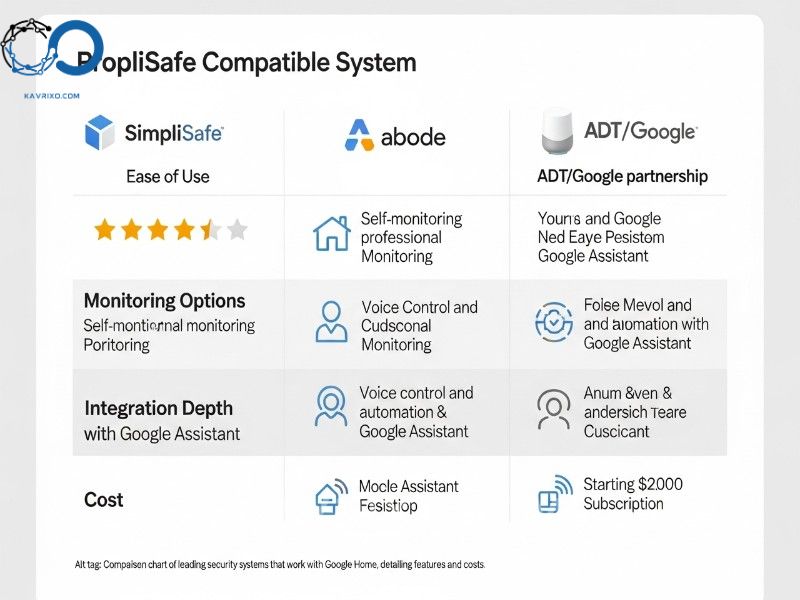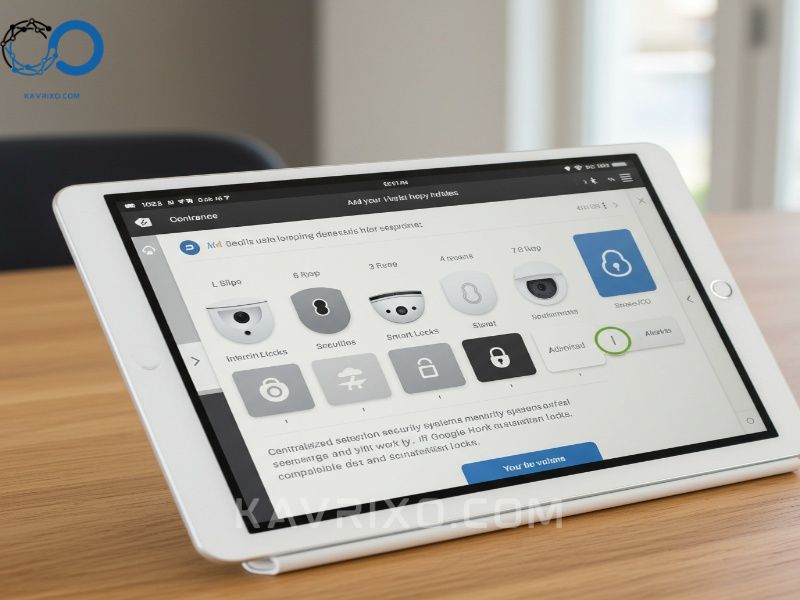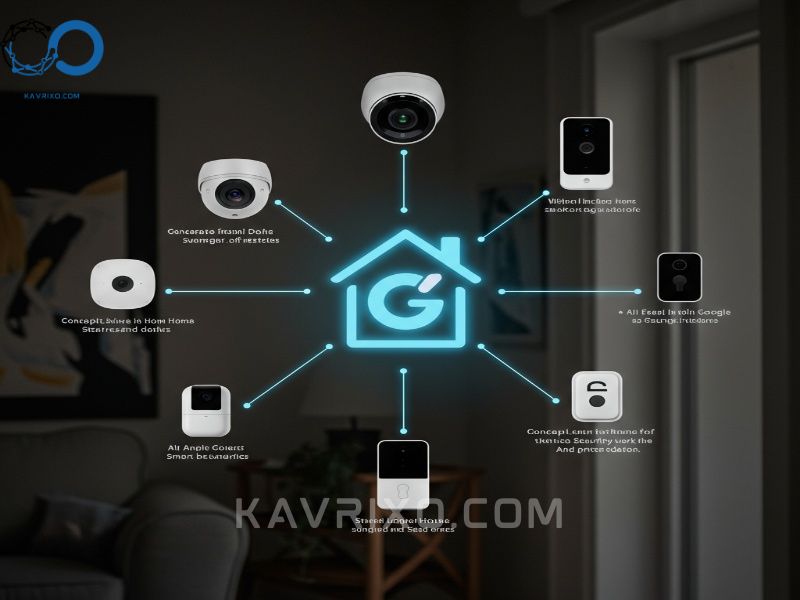The modern home is increasingly defined by connectivity. Gone are the days when a security system operated in isolation, relying solely on a loud siren to alert neighbors. Today, homeowners demand a unified ecosystem where every device—from the thermostat to the door sensor—communicates intelligently. At the heart of this unified experience for millions of users is Google Home (or Google Assistant).
Choosing security systems that work with Google Home isn’t just about convenience; it’s about creating a proactive, responsive protective layer around your property. This comprehensive guide will explore the essential criteria, top systems, and practical steps needed to integrate a robust, smart security setup directly into your Google ecosystem, offering you peace of mind managed by simple voice commands and automated routines.
Contents
- 1 Understanding the Power of Google Home Integration in Security
- 2 Essential Features of Security Systems That Work with Google Home
- 3 Top Contenders: The Best Google Home Compatible Alarm Systems
- 4 Deep Dive: Key Components and Google Home Functionality
- 5 Choosing the Right Security System That Works with Google Home
- 6 Setting Up and Optimizing Your Integrated System
- 7 The Future of Smart Home Security Integration
- 8 Conclusion: Securing Your Future with Google Home
Understanding the Power of Google Home Integration in Security
For many, Google Home serves as the digital brain of the house. By integrating your home security directly into this platform, you transform passive monitoring into active management. This synchronization allows devices to interact in ways traditional systems simply cannot match, greatly enhancing both convenience and emergency response times.
How Google Home Acts as the Central Command Hub
Google Home, powered by Google Assistant, provides a centralized interface for all connected devices. When it comes to security, this central hub functionality is invaluable. Instead of juggling multiple apps for cameras, locks, and alarms, you manage everything through one unified system.
This integration means you can use voice commands via a Nest Hub or smart speaker to control critical functions. Imagine leaving the house and simply saying, “Hey Google, I’m leaving now.” This single command can simultaneously lock the front door, arm the perimeter sensors of your security system, turn off non-essential lights, and adjust the thermostat—all because your security systems that work with Google Home are linked through a single routine.

The Technological Protocols Enabling Seamless Connectivity
For a security system to truly function harmoniously with Google Home, it must utilize compatible communication protocols. While Wi-Fi and Bluetooth are common, robust security systems often rely on dedicated low-power mesh networks:
Z-Wave and Zigbee
These are mesh networking protocols widely used in home automation. They create a reliable, low-power network that allows security sensors and hubs to communicate efficiently without straining your Wi-Fi network. Many of the best google home compatible alarm system options utilize these standards, often connecting to Google Home through a central hub that acts as a translator.
The Role of Matter
Matter is the new, unified smart home connectivity standard backed by Google, Apple, Amazon, and hundreds of other companies. Its goal is to eliminate compatibility headaches. As more security devices become Matter-certified, the process of setting up security systems that work with Google Home will become instantaneous, ensuring high reliability and cross-platform function.
Essential Features of Security Systems That Work with Google Home
When evaluating potential security setups, look beyond basic entry sensors. A truly integrated system offers advanced capabilities that leverage the power of Google Assistant.
Unrivaled Voice Control Capabilities
The primary benefit of integrating security systems with Google Home is hands-free operation. Users must be able to:
- Arm and Disarm: “Hey Google, arm the home security system in Away mode.” (Note: For high-security functions like disarming, many systems require a verbal PIN or confirmation on a screen for safety.)
- Check Status: “Hey Google, is the back door locked?” or “What is the status of the alarm system?”
- Trigger Scenes: Activate pre-set security scenes, such as “Lockdown,” which might arm the system, close smart blinds, and flash exterior lights.
Routine Automation for Proactive Security
Google Home Routines allow your security components to act based on context, not just commands. This creates a proactive security shield.
- Geofencing Routines: The system can automatically transition from “Home” to “Away” mode when the last person leaves the defined geofence area (as detected by their phones).
- Security-Triggered Actions: If a motion sensor detects movement in the basement (part of your google home compatible alarm system), a routine can be triggered to turn on the basement lights brightly and start recording on a nearby connected camera.
- Nighttime Security: At 10:00 PM, a routine can be set to ensure all smart locks are engaged and the system is armed in “Stay” mode, focusing surveillance on perimeter doors and windows.
Seamless Camera and Video Streaming Integration
A crucial element of modern security systems that work with Google Home is the ability to view camera feeds instantly. If the doorbell rings or an alert is triggered, you should be able to say, “Hey Google, show me the front door camera,” and have the feed instantly display on your Nest Hub or Chromecast-enabled television. This eliminates the delay associated with unlocking a phone and opening a proprietary app.

Top Contenders: The Best Google Home Compatible Alarm Systems
While many security devices claim “Google compatibility,” true integration means deep, useful functionality. Here are the leading platforms offering robust security systems that work with Google Home effectively.
SimpliSafe: The User-Friendly Choice
SimpliSafe is perhaps the most popular DIY security system, known for its easy installation and no-contract monitoring options.
- Integration Level: Strong. SimpliSafe allows arming and checking the status of the system via Google Assistant voice commands.
- Strengths: Excellent range of sensors (entry, motion, environmental), reliable professional monitoring, and straightforward setup. It acts as an effective, dedicated google home compatible alarm system core.
- Limitations: While you can arm the system via voice, disarming usually requires the physical keypad or the app for maximum security protection. Camera integration is often managed through SimpliSafe’s own app rather than fully integrated into the Google Home video ecosystem.
Nest Secure (The Legacy Factor and Modern Migration)
It is essential to address Google’s own legacy product: Nest Secure. While Nest Secure was tightly integrated with Google Home, Google discontinued the system in 2020. Existing users continue to receive support, but new users cannot purchase it.
- Migration Path: Google has since partnered closely with ADT to create the Google Nest Doorbell and ADT security solution. This new partnership emphasizes professional installation and monitoring while leveraging Google’s superior camera technology and ecosystem control. If you seek a fully Google-native experience with professional backing, the ADT-Google partnership is the official successor path.
Abode: The Power User’s Hybrid System
Abode is often favored by tech-savvy users because it supports a wide variety of protocols (Z-Wave, Zigbee, Wi-Fi) and offers powerful automation features (CUE automation engine).
- Integration Level: Deep. Abode’s hub acts as a bridge, allowing nearly all connected devices to be exposed to Google Home, enabling complex routines and voice control over arming, status checks, and individual sensor states.
- Strengths: Flexibility in hardware choice (use Abode sensors or third-party Z-Wave devices), excellent customization for routines, and both self-monitoring and professional monitoring options. This system truly maximizes the potential of security systems that work with Google Home.
- Considerations: Requires a slightly steeper learning curve than a basic DIY system like SimpliSafe.
Ring Alarm and Compatibility Nuances
While Ring is owned by Amazon (Google’s main competitor), many users have both Ring security products and Google Assistant devices.
- Integration Level: Limited but functional. Ring doesn’t offer direct, deep integration with Google Home security functions (like arming/disarming the main alarm system) due to the competitive landscape.
- What Works: Ring Video Doorbells and cameras can stream video to the Google Nest Hub via voice command if you use a third-party bridge or specific integration tricks, but the core google home compatible alarm system functionality is restricted to Ring’s own app and ecosystem (Alexa).

Deep Dive: Key Components and Google Home Functionality
A complete smart security setup involves more than just a central panel. The integration of complementary devices is what truly defines a seamless security systems that work with Google Home.
Smart Locks and Doorbell Cameras
These are arguably the most frequently used components and must integrate flawlessly:
- Smart Locks: Brands like Yale, Schlage, and Kwikset offer Wi-Fi or Z-Wave locks that link directly to Google Home. This allows users to lock/unlock doors via voice and check their status remotely. Crucially, these locks can be incorporated into “Away” or “Good Night” routines.
- Doorbell Cameras: Nest Doorbells (wired or battery) offer the highest level of integration, including familiar face detection and direct announcements on all Google Home speakers when someone is detected. Third-party doorbells often offer streaming capability but lack the deep notification features of the native Nest products.
Environmental Sensors and Safety Integration
Security isn’t just about intruders; it’s about environmental hazards too. Modern security systems that work with Google Home extend protection to fire, flood, and carbon monoxide (CO).
- Smoke and CO Alarms: Smart alarms, particularly those from Nest Protect or compatible third parties, can alert you via Google Home speakers and send remote notifications. More importantly, they can trigger other security actions, such as automatically unlocking doors for emergency responders if a fire is detected.
- Water Leak Sensors: Placing these sensors in basements or near washing machines can alert Google Home, which can then notify you immediately via text or speaker announcement, potentially saving thousands in damage.
Professional Monitoring vs. Self-Monitoring
When selecting a google home compatible alarm system, you must decide who handles the alerts.
- Self-Monitoring (DIY): You receive all alerts via your phone and Google Home announcements. This is cheaper (or free), but requires you to personally verify the threat and contact emergency services.
- Professional Monitoring: A central station monitors your system 24/7. When an alarm triggers, they follow protocols (calling you, then dispatching police/fire) immediately. Many top systems like SimpliSafe and Abode offer competitive professional monitoring plans that integrate smoothly with your smart home setup.

Choosing the Right Security System That Works with Google Home
Given the variety of options, a systematic approach is necessary to ensure the system meets your specific security needs and budget.
Assess Your Home’s Needs and Layout
A small apartment requires a very different security approach than a multi-story house.
- Perimeter vs. Interior: Do you primarily need perimeter protection (doors, windows) or interior surveillance (motion sensors, cameras)? Large homes benefit from wireless mesh networks (Z-Wave/Zigbee) to ensure sensor signals reach the hub without fail.
- Pet Immunity: If you have pets, ensure motion sensors are rated for pet immunity (typically up to 40-60 pounds) to avoid false alarms that disrupt your Google Home routines.
- Connectivity Reliability: If your Wi-Fi is spotty, choose a system with cellular backup (a standard feature on most professional plans) to ensure your google home compatible alarm system can still communicate during power outages or internet disruptions.
Installation Type: DIY vs. Professional Setup
Integration complexity often dictates installation choice:
- DIY Systems (SimpliSafe, Abode): These are designed for the average homeowner to install in under an hour. Integration with Google Home usually involves linking accounts in the Google Home app—a simple process. This offers flexibility but puts the maintenance burden on you.
- Professionally Installed Systems (ADT/Google Nest): While more expensive, these systems ensure correct sensor placement, reliable wiring, and guaranteed integration from the start. They are ideal for users who want maximum reliability and minimal setup hassle for their security systems that work with Google Home.
Evaluating Monthly Fees and Contracts
The cost structure is a critical differentiator among security systems that work with Google Home.
- No Contract / Self-Monitoring: You buy the hardware outright and use Google Home for notifications. Low monthly cost (sometimes $0), but no professional response.
- Contracted Monitoring: Requires a monthly fee, usually tied to a multi-year agreement (e.g., 36 months). This provides 24/7 monitoring and often includes equipment financing.
- Flexible Monitoring (SimpliSafe, Abode): These systems allow you to pay month-to-month for professional monitoring and cancel anytime, offering the best balance of flexibility and protection for your integrated smart system.

Setting Up and Optimizing Your Integrated System
Once you’ve chosen your hardware, optimizing the integration is key to maximizing the security and convenience offered by Google Home.
Creating Custom Google Assistant Routines
Beyond simple arming/disarming, leveraging Routines dramatically improves usability.
- The “Intruder Scare” Routine: If a motion sensor triggers late at night, the routine should not just alert you, but also initiate deterrents. This could include turning all smart lights (connected via Google Home) to flashing red, sounding a specific chime on the smart speakers, and broadcasting a pre-recorded loud warning message.
- The “Welcome Home” Routine: When you arrive, the routine disarms the google home compatible alarm system, unlocks the front door, turns on pathway lights, and starts playing ambient music.
Troubleshooting Common Integration Issues
While the goal is seamless operation, connectivity issues occasionally arise.
- “Device Not Responding”: This usually indicates a Wi-Fi or Z-Wave/Zigbee signal issue. Ensure your security hub is centrally located and that your Google Home device is on the same network band (2.4 GHz is often more stable for security components).
- Voice Command Failures: Check the exact phrasing required by the system developer. Some security systems that work with Google Home require precise commands (e.g., “Arm in Away Mode” vs. “Set the Alarm”).
- App Permissions: Ensure the third-party security app (SimpliSafe, Abode, etc.) has full permission to integrate with your Google Assistant account via the “Works with Google” section in the Google Home app. If you change your password, you may need to re-link the service.
The Future of Smart Home Security Integration
The evolution of security systems that work with Google Home is accelerating, moving towards predictive and truly intelligent protection.
The Role of AI and Machine Learning
Future systems will rely less on simple trip wires and more on advanced AI, especially in camera technology.
- Behavioral Analysis: AI will learn the normal behavior patterns of your household (when people leave, when the dog is let out). Alerts will only be triggered when activity deviates significantly from the learned norm, drastically reducing false alarms.
- Predictive Maintenance: The system will monitor battery life and signal strength of sensors, proactively alerting you via Google Home when maintenance is needed, ensuring your google home compatible alarm system never fails due to a dead battery.
Cross-Platform Standards and the Ecosystem Convergence
The widespread adoption of Matter means that integration will soon become an industry standard, not a feature highlight. This convergence will allow homeowners to mix and match the best components—a camera from one brand, sensors from another, and a central hub from a third—all communicating flawlessly through Google Home. This ensures consumers can build the absolute best security systems that work with Google Home without being locked into a single vendor’s hardware.

Conclusion: Securing Your Future with Google Home
The fusion of robust physical protection and the intelligence of Google Home represents the pinnacle of modern home security. By carefully selecting security systems that work with Google Home, you gain the ability to monitor, manage, and automate your protection using the simplest interface available: your voice.
Whether you choose a flexible DIY solution like SimpliSafe or a professionally backed system leveraging Google Nest technology, the key is deep integration. Prioritize systems that offer comprehensive routine automation and seamless camera streaming. Investing in a truly google home compatible alarm system ensures that your home is not just secure, but intelligently connected, providing immediate response and unparalleled peace of mind in the digital age.
